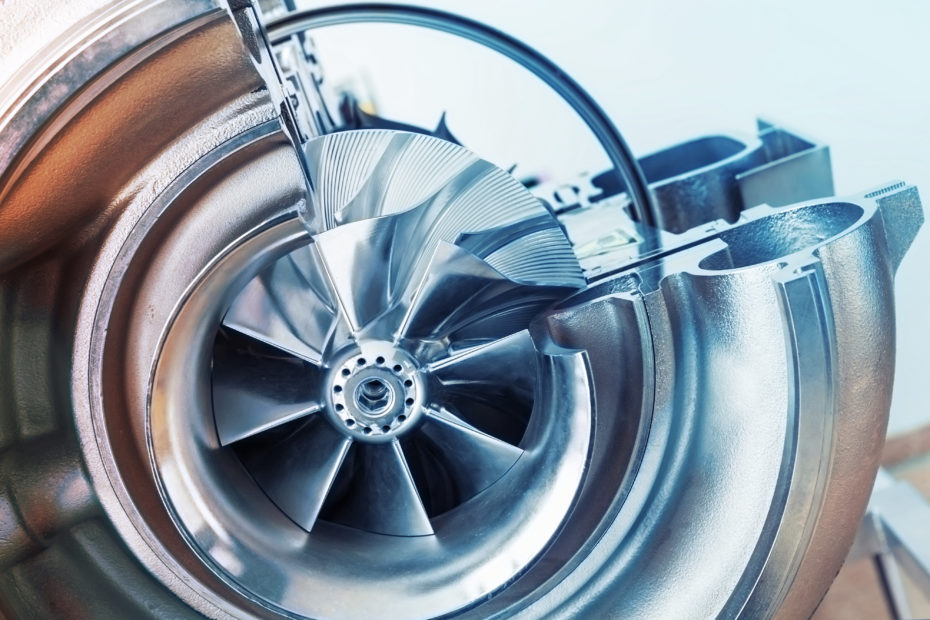Turbochargers Fundamentals Explained
Table of ContentsLittle Known Questions About Turbochargers.The Only Guide for TurbochargersTurbochargers Fundamentals Explained

For example, in Opel bi-turbo Diesel, only the smaller turbocharger works at low speed, providing high torque at 1,5001,700 rpm - turbochargers. Both turbochargers operate together in mid variety, with the smaller one pre-compressing the air, which the bigger one additional compresses. A bypass valve controls the exhaust circulation to each turbocharger.
Smaller sized turbochargers have less turbo lag than larger ones, so frequently 2 small turbochargers are used instead of one large one. This setup is popular in engines over 2. 5-litres and in V-shape or boxer engines. Twin-scroll or divided turbochargers have two exhaust gas inlets and two nozzles, a smaller sharper angled one for quick reaction and a bigger less angled one for peak performance.
In twin-scroll designs, the exhaust manifold physically separates the channels for cylinders that can disrupt each other, so that the pulsating exhaust gasses circulation through different spirals (scrolls). With common shooting order 1342, 2 scrolls of unequal length set cylinders 1 and 4, and 3 and 2. This lets the engine efficiently use exhaust scavenging techniques, which reduces exhaust gas temperature levels and emissions, enhances turbine performance, and minimizes turbo lag apparent at low engine speeds.
The vanes are positioned just in front of the turbine like a set of a little overlapping walls. Their angle is changed by an actuator to block or increase air circulation to the turbine. This variability preserves a comparable exhaust speed and back pressure throughout the engine's rev range. The outcome is that the turbocharger improves fuel effectiveness without an obvious level of turbocharger lag.
The compressor is comprised of an impeller, a diffuser and a volute housing. The operating series of a compressor is explained by the "compressor map". The flow variety of a turbocharger compressor can be increased by permitting air to bleed from a ring of holes or a circular groove around the compressor at a point somewhat downstream of the compressor inlet (but far nearer to the inlet than to the outlet).
Some Ideas on Turbochargers You Should Know
It attains this by requiring a simulation of impeller stall to happen continually. Allowing some air to leave at this area hinders the onset of surge and widens the operating variety. While peak efficiencies may decrease, high efficiency may be achieved over a greater range of engine speeds. linked here Boosts in compressor efficiency lead to a little cooler (more thick) intake air, which enhances power.
The capability of the compressor to provide high boost at low rpm might likewise be increased partially (because near choke conditions the compressor draws air inward through the bleed course). Ported shrouds are utilized by numerous turbocharger producers. The centre hub rotating assembly (CHRA) houses the shaft that connects the compressor impeller and turbine.

Ball bearings developed to support high speeds and temperature levels are in some cases utilized instead of fluid bearings to support the turbine shaft. This helps the turbocharger accelerate more rapidly and reduces turbo lag. Some variable nozzle turbochargers utilize a rotary electric actuator, which uses a direct stepper motor to open and close the vanes, instead of pneumatic controllers that operate based upon air pressure.
When the pressure of the engine's intake air is increased, its temperature level likewise increases. This event can be discussed through Gay-Lussac's law, stating that the pressure of a provided amount of other gas held at continuous volume is straight proportional to the Kelvin temperature. With more click reference pressure being added to the engine through the turbocharger, general temperatures of the engine will likewise increase.
The warmer the consumption air, the less dense, and the less oxygen offered for the combustion event, which reduces volumetric effectiveness. Not just does excessive intake-air temperature reduce effectiveness, it likewise leads to engine knock, or detonation, which is harmful to engines. To make up for the boost in temperature, turbocharger units frequently utilize an intercooler in between succeeding stages of increase to cool off the consumption air.
Turbochargers Can Be Fun For Everyone
There are two locations on which intercoolers are commonly mounted. turbochargers. It can be either mounted on top, parallel to the engine, or installed near the lower front of the vehicle. Top-mount intercoolers setups will result in a reduction in turbo lag, due in part by the location of the intercooler being much closer to the turbocharger outlet and throttle body.
Front-mount intercoolers can have the potential to give much better cooling compared to that of a top-mount. The location in which a top-mounted intercooler is located, is near one of the hottest locations of a car, right above the engine. This is why most producers consist of big hood scoops to assist feed air to the intercooler while the cars and truck is moving, but while idle, the hood scoop provides little to no advantage.
With more range to travel, the air circulated through a front-mount intercooler may have more time to cool. Methanol/water injection has been around considering that the 1920s but was not utilized up until World War II. Including the mix to consumption of the turbocharged engines decreased operating temperatures and increased horse power.